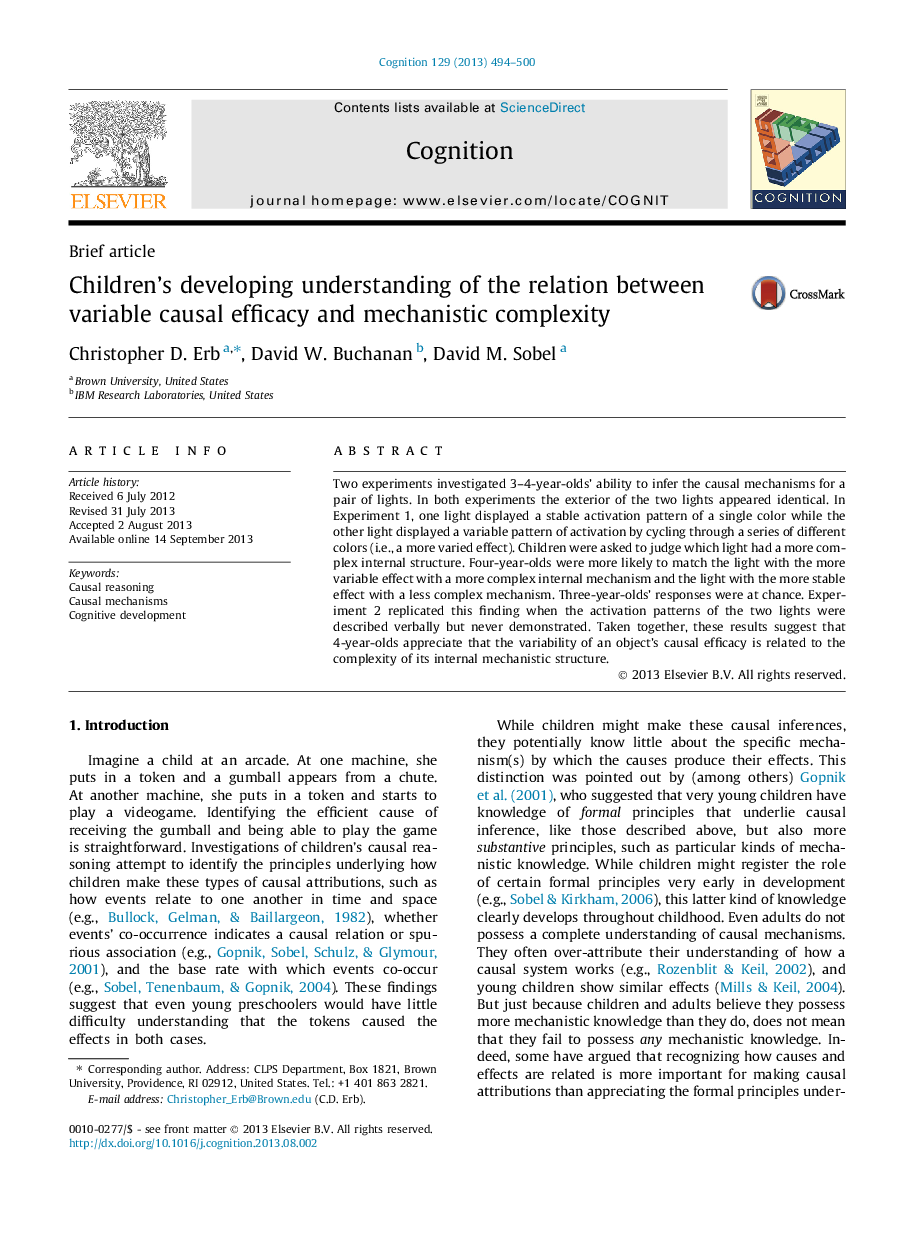| Article ID | Journal | Published Year | Pages | File Type |
|---|---|---|---|---|
| 10457605 | Cognition | 2013 | 7 Pages |
Abstract
Two experiments investigated 3-4-year-olds' ability to infer the causal mechanisms for a pair of lights. In both experiments the exterior of the two lights appeared identical. In Experiment 1, one light displayed a stable activation pattern of a single color while the other light displayed a variable pattern of activation by cycling through a series of different colors (i.e., a more varied effect). Children were asked to judge which light had a more complex internal structure. Four-year-olds were more likely to match the light with the more variable effect with a more complex internal mechanism and the light with the more stable effect with a less complex mechanism. Three-year-olds' responses were at chance. Experiment 2 replicated this finding when the activation patterns of the two lights were described verbally but never demonstrated. Taken together, these results suggest that 4-year-olds appreciate that the variability of an object's causal efficacy is related to the complexity of its internal mechanistic structure.
Related Topics
Life Sciences
Neuroscience
Cognitive Neuroscience
Authors
Christopher D. Erb, David W. Buchanan, David M. Sobel,
